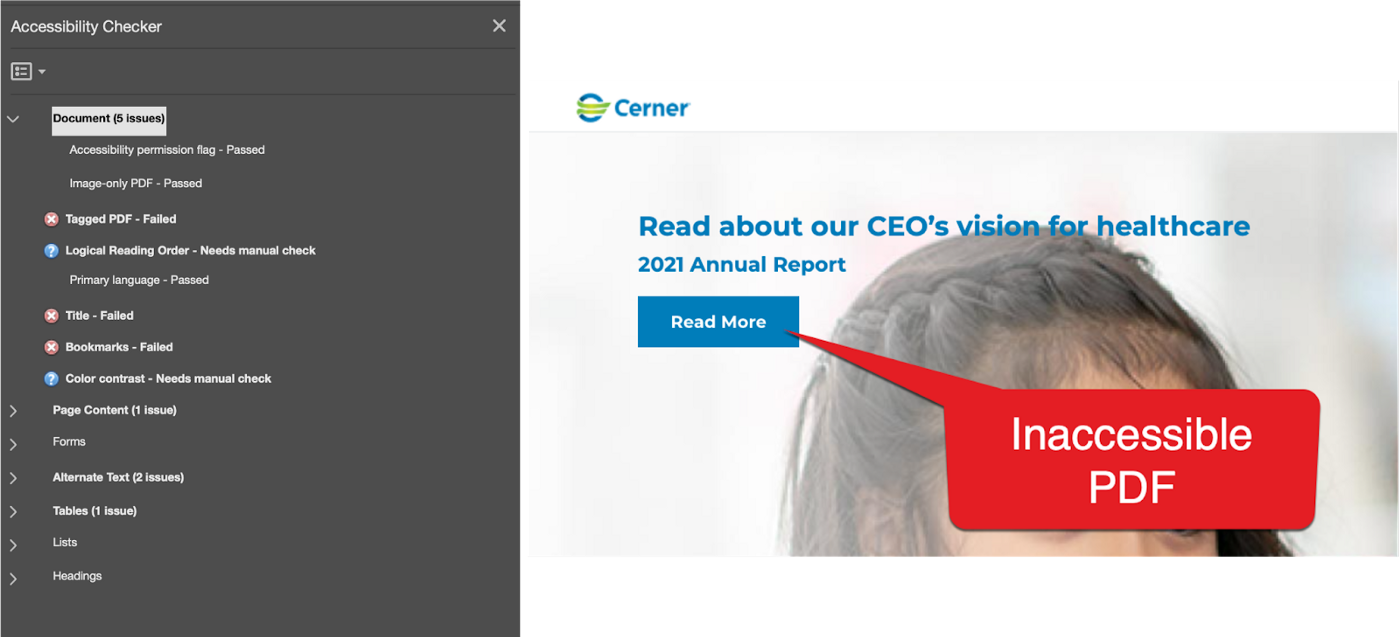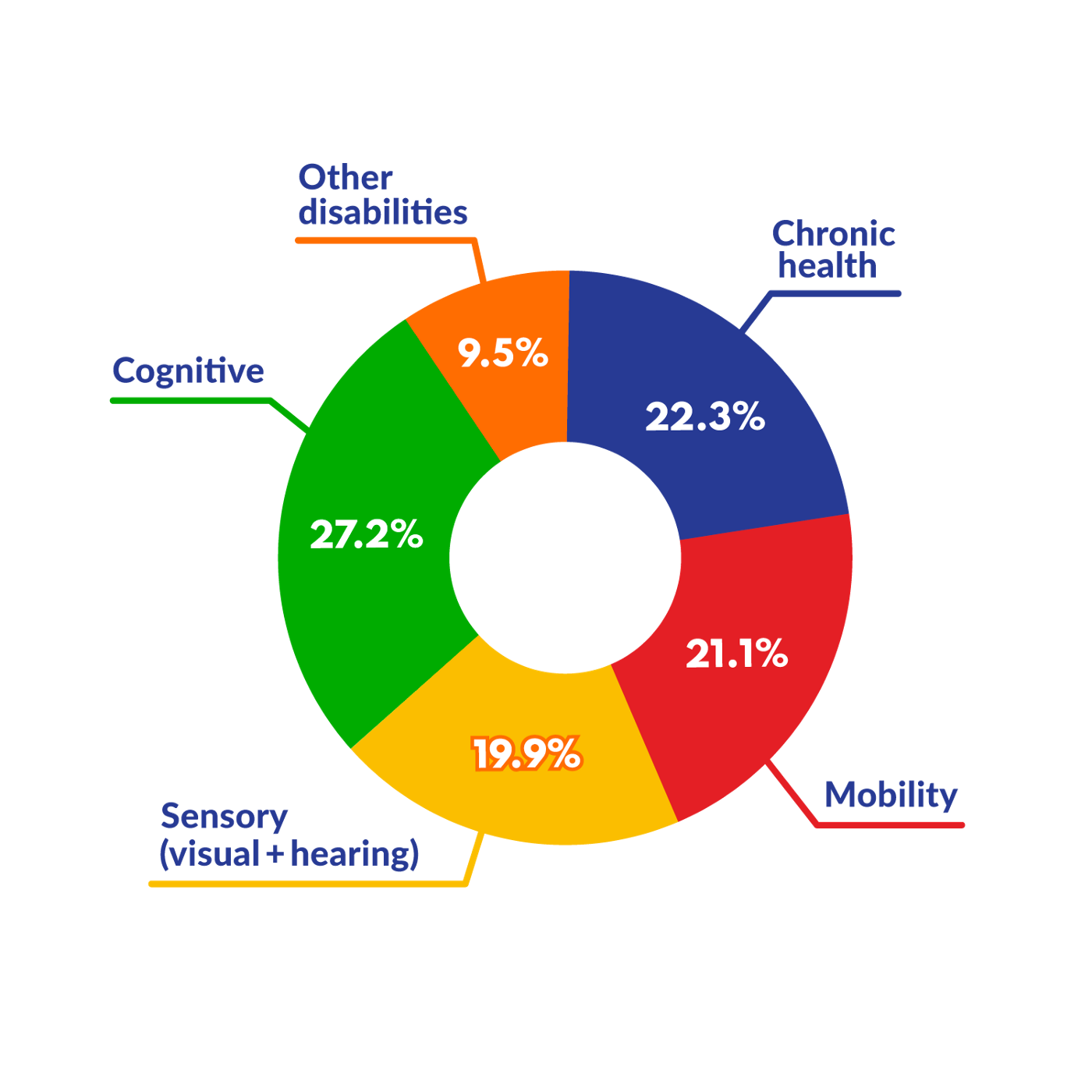Summary

In this article, my friends Ken Nakata from Converge Accessibility, Josef Pevsner from National Organization on Disability, and I come together to discuss and analyze the recent brief in the Bone v. UNC Health healthcare accessibility lawsuit.
What Happened?
In Bone v. University of North Carolina Health Care System, U.S. Dist. LEXIS 7937, 2022 WL 138644 (M.D.N.C. 2022), the plaintiffs, represented by the National Federation of the Blind, sued the University of North Carolina Health System due to insufficient access to their own medical bills and records.
The January opinion from the United States District Court for the Middle District of North Carolina found that UNC had failed to meet the plaintiff’s communications accessibility needs.
Why Is This Case Important?
Although this lawsuit and the latest opinion are fairly ordinary, there are a few interesting things to note about the case.
- Because this case has multiple defendants, some public health systems and others private providers, the case is filed under both Title II and Title III of the ADA
- Because the lawsuit concerns healthcare information, they are also subject to Section 1557 of the Patient Protection and Affordable Care Act
- The lawsuit specifically calls out Epic’s MyChart, a very commonly used Electronic Health Records (EHR) system, which can have workflows configured for accessibility, but they were not in this case
- While electronic health records accessibility is a commonsense top priority for advocates, there are fewer lawsuits related to crucial systems like Epic than those related to online retailers or other industries
What Are the Accessibility Obstacles?
In the United States, the largest Electronic Health Record providers are two companies named Epic and Cerner. Neither company has been a leader in ensuring their information technology is accessible to people with disabilities.
With Epic, a search engine query for “Epic Systems accessibility” brings up no accessibility related information from the company itself. It does however bring up an article covering a recent lawsuit from 2020 that was decided in Epic’s favor “Epic found not liable for product inaccessible to blind employee.” This case is interesting because it has gone on for years and includes a discussion that the product was fixed in 2018 but broke again in 2019 with a product upgrade.
Cerner at least has an Accessibility Statement on their website mentioning that they will respond to any accessibility feedback in five days. They do not have specific information about the accessibility of their individual products.
The first PDF you encounter on Cerner’s homepage titled “2021 Annual Report” [PDF] is not tagged and is not accessible. A quick run of Adobe Acrobat’s Accessibility Checker shows numerous issues easily discovered on one of the most widely shared documents from the company. This first impression from the website does not leave the visitor with an understanding of Cerner’s commitment to accessibility.

The need for accessibility to these medical systems is essential for people with disabilities to be employed and follow their passions in the healthcare industry. In Change in Prevalence of Disabilities and Accommodation Practices Among US Medical Schools, 2016 vs 2019, we learn “Of the 87 schools participating in 2019, respondents reported 2,600 students with disabilities, representing 4.6% of the total enrollment of 56,217 students. In 2019, 4.6% of medical students reported disabilities, a 69% relative increase from 2016.”
Estimated Prevalence of US Physicians With Disabilities used a representative sample of 6,000 physicians and found that approximately 3% of those surveyed had a disability. When looking at the prevalence of these disabilities, it can be seen that a wide range of people with disabilities work as physicians today.

It is clear that healthcare information systems must be accessible so that patients, nurses, doctors, and all of the healthcare workers that make up the sector can access technology. As healthcare shifts more and more to technology, now is the time to make a more equitable healthcare system.
What Does This Case Mean for Digital Accessibility?
In the following audio clip, Josef and Ken discuss the Bone v. UNC Health accessible healthcare communication lawsuit. aKen points out some of the most interesting legal aspects of the case.
The Last Word on this Healthcare Accessibility Lawsuit
The most important element in the Bone v. UNC Health case is the general lack of focus and scrutiny on healthcare information technologies in the larger accessibility discussion. In recent years, and especially since the start of the COVID-19 pandemic, the healthcare industry has rapidly shifted their communications and information storage from older established processes to newer digital ones.
As these systems continue to center around newly built digital infrastructure, and away from older methods, the organizations building and benefiting from that infrastructure must make sure accessibility needs are baked in by design. Every single person needs access to their health records and the onus should be placed upon providers and their technology vendors to ensure that access.
Transcript
Josef Pevsner: Hey Ken, have you read about the Bone v. University of North Carolina Health Care System lawsuit over healthcare information accessibility?
Ken Nakata: Yes, I did. It’s a pretty long opinion isn’t it?
Josef Pevsner: Why yes it is. What does this latest opinion actually say in layman’s terms?
Ken Nakata: There are a ton of legal issues in the case but what it really comes down to is the magistrate’s finding that UNC failed to meet the plaintiffs’ communication needs. The plaintiffs are blind. UNC said that they should use their electronic records system but it was inaccessible.
Josef Pevsner: Why didn’t the defendant step in and provide the requested accommodations earlier on? How did this case even make it to court?
Ken Nakata: Exactly. The original and amended complaints didn’t even discuss the electronic record system. The defendants could have just agreed to privately make the plaintiff’s bills and other documents accessible but they were inflexible.
Josef Pevsner: This isn’t your traditional website accessibility lawsuit case. What is the importance of cases like these that concern print accessibility and legacy systems?
Ken Nakata: This is really just a traditional ADA accessibility complaint about getting documents in an accessible format. The problem is that organizations now rely entirely on electronic systems and don’t have processes in place to offer that same information in an accessible format — either using plain old paper or by making their electronic systems accessible.
Josef Pevsner: The greater issue in this case from my perspective is the larger question of healthcare information systems accessibility. Have you noticed a proliferation of lawsuits like this one recently?
Ken Nakata: Actually no. The whole reason I was interested in Bone was because it mentioned an electronic health records system, which really need to be made more accessible. Hospitals need them to be accessible to comply with the ADA. And the Affordable Care Act requires that electronic records be accessible. Nonetheless, I almost never hear about lawsuits over them.
Josef Pevsner: What needs to happen to get to a point where accessibility is totally baked into critical digital ecosystems like the ones in Bone v. UNC Health?
Ken Nakata: Well, clearly we need regulations from DOJ under Title III of the ADA. That will put pressure on hospitals to use record systems that are accessible and to provide workarounds for disabled patients until they are accessible. That will put pressure on the companies that make electronic health record systems accessible.
It would also be nice if HHS put out clearer rules specifying that electronic health record systems needed to comply with WCAG 2.1 A/AA instead of just saying that they needed to be “accessible” because the manufacturers need better guidance.
Accessibility Compliance Help
Our years of experience working with lawyers, as well as being expert witnesses in lawsuits, has given us a unique perspective when it comes to explaining and justifying our clients’ accessibility compliance.
If you are experiencing any legal issues related to the accessibility of your technology, please contact us to discuss how we can help.